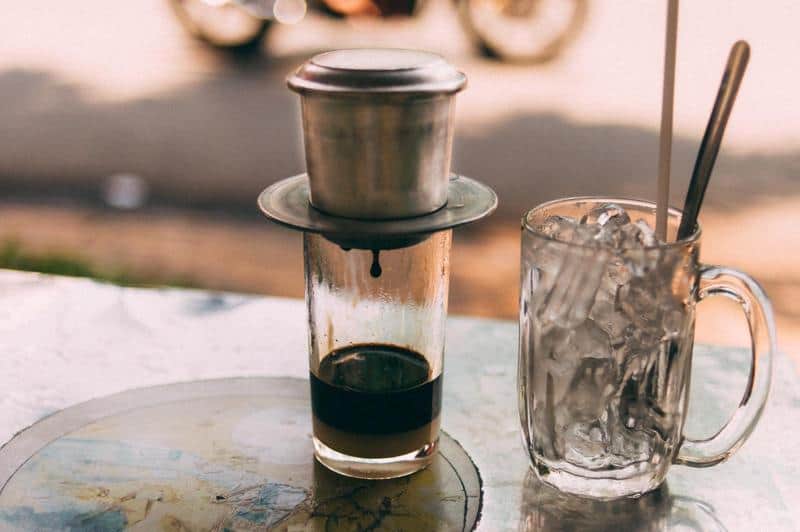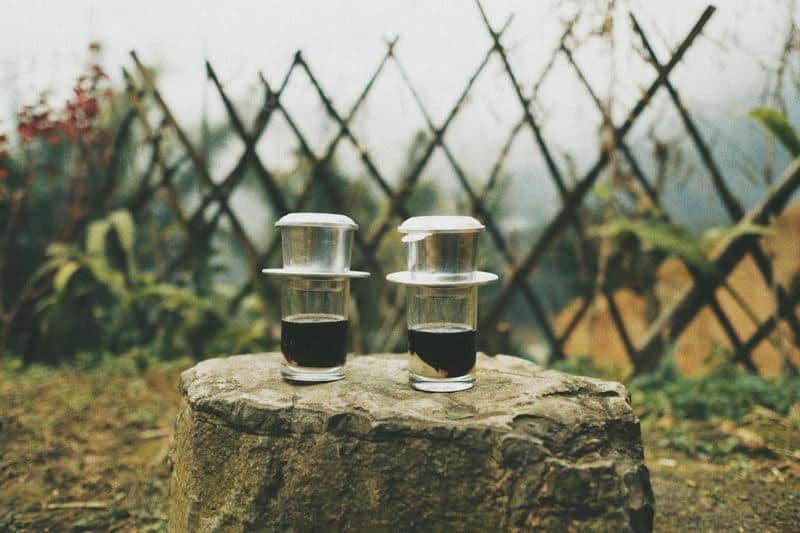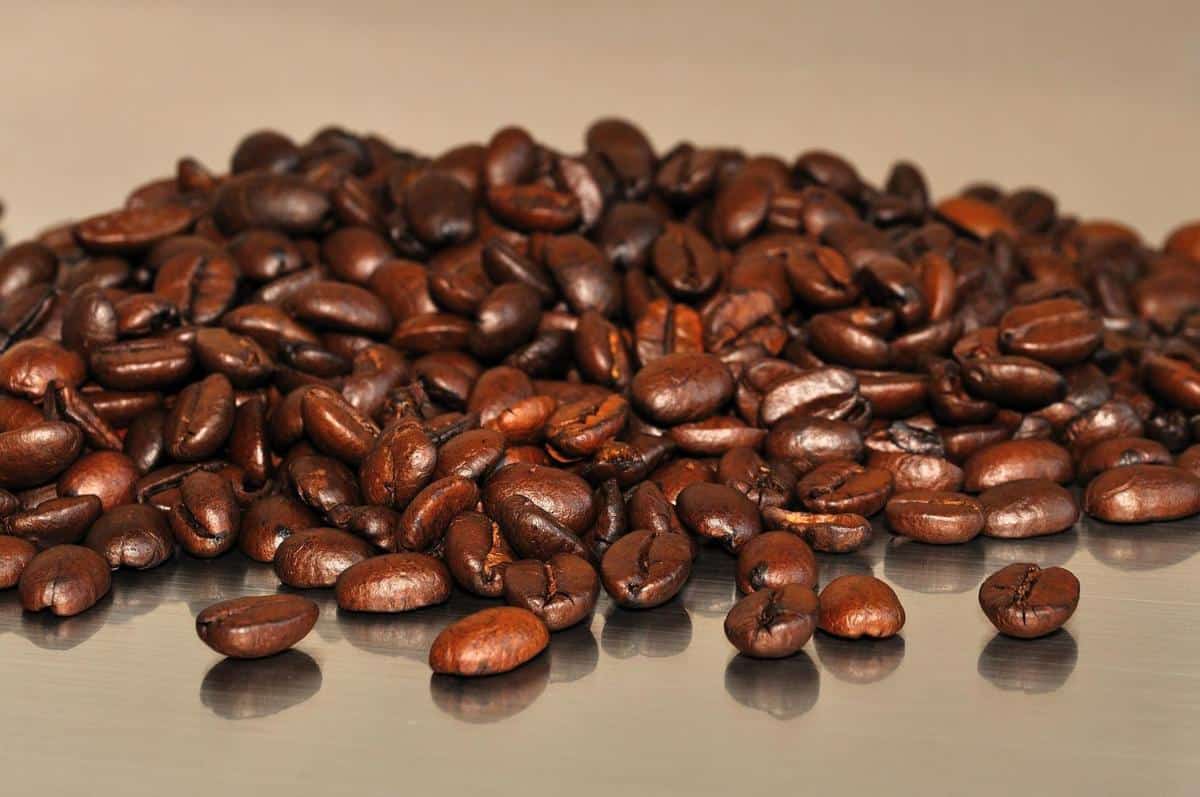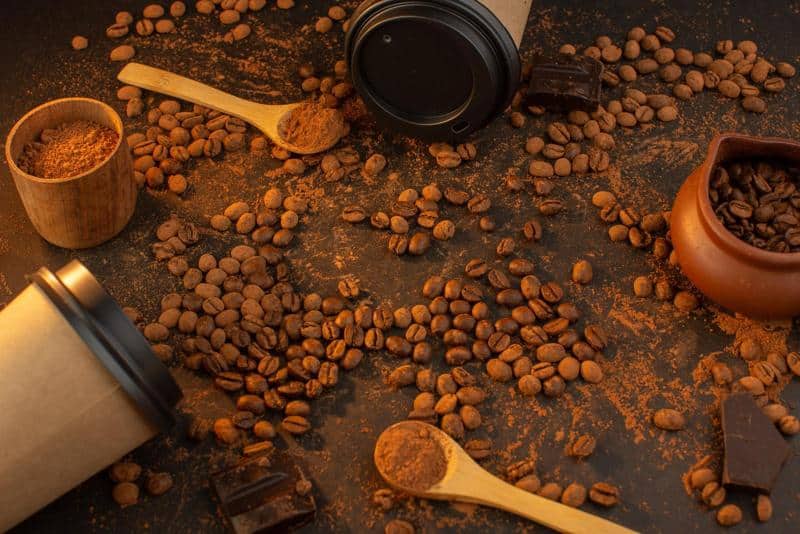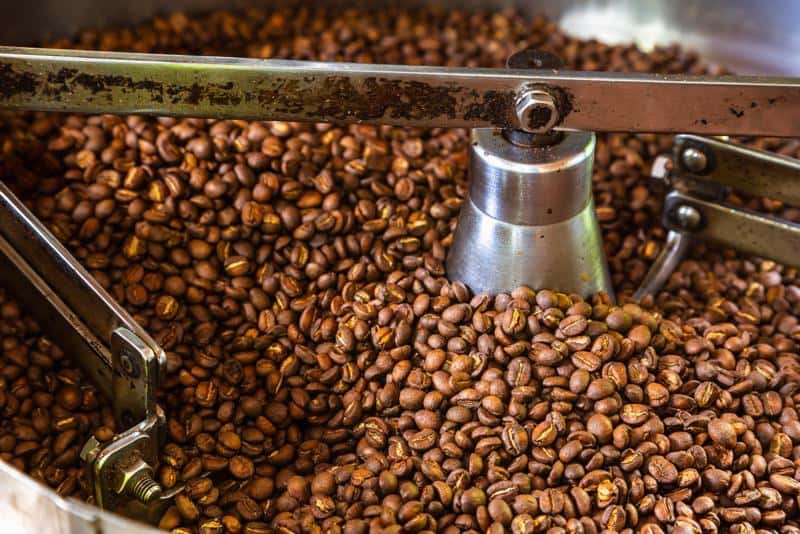Are you a coffee lover looking for your next caffeine fix? Look no further than Vietnamese coffee. With its rich flavor and unique brewing methods, Vietnamese coffee is sure to awaken your senses and leave you craving for more. In this article, we will take you on a journey to discover the magic of Vietnamese coffee – from its cultural history to its health benefits and everything in between.
Vietnamese coffee has a long and rich cultural history that dates back centuries. Coffee was first introduced to Vietnam by French colonists in the late 19th century, and since then it has become an integral part of the country’s identity. Vietnam is now the second-largest exporter of coffee in the world, known for producing high-quality beans that are sought after by coffee enthusiasts worldwide.
What sets Vietnamese coffee apart from other varieties is its distinct characteristics. The country’s fertile soil, ideal climate, and unique growing methods result in beans that are known for their deep richness and complexity. Robusta beans are predominantly used in Vietnamese coffee, giving it a bold flavor profile with hints of chocolatey notes and a smooth finish.
So whether you’re already a fan of Vietnamese coffee or just curious to learn more, join us as we delve into its fascinating origins, explore the different flavors and brewing methods, and uncover where you can find authentic Vietnamese coffee. Get ready to embark on a journey filled with incredible aromas, bold flavors, and energizing qualities that will truly make your day. Let’s begin our exploration of delicious Vietnamese coffee.
The Rich Cultural History of Vietnamese Coffee
Vietnamese coffee is not just a beverage; it is deeply rooted in the country’s cultural history. Dating back to the late 19th century, when Vietnam was under French colonial rule, the introduction of coffee brought about a significant shift in the country’s agricultural and economic landscape.
During this time, Vietnam was predominantly an agricultural society heavily focused on rice production. However, the French established coffee plantations in Vietnam’s fertile highlands, sparking a new era for the country’s economy.
Coffee cultivation quickly spread throughout the central highlands of Vietnam, transforming vast areas of land into lush coffee estates. This expansion had a profound impact on Vietnamese society and created new opportunities for both employment and trade.
Not only did coffee become a major export commodity for Vietnam, but it also became an integral part of Vietnamese culture. Coffee shops began popping up across the country, serving as meeting places where people would gather to socialize and discuss current events.
These cafes later evolved into unique cultural spaces known as “ca phe sua da” or “cafe sua da,” which translates to “iced milk coffee.” Today, sipping on a glass of cafe sua da has become synonymous with Vietnamese identity and way of life.
Unique Characteristics of Vietnamese Coffee Beans
Vietnamese coffee beans have unique characteristics that set them apart from other types of coffee beans. One of the key factors that contribute to the distinctiveness of Vietnamese coffee is the climate and geography in which it is grown. The country’s tropical climate, with its hot, humid summers and cool, dry winters, provides ideal conditions for coffee plantations.
Vietnam is the world’s second-largest exporter of coffee beans, after Brazil. The country primarily cultivates Robusta coffee beans, which are known for their strong flavor and high caffeine content. Robusta beans are more robust and resilient than Arabica beans, making them well-suited for the climate conditions in Vietnam.
Another characteristic of Vietnamese coffee beans is the way they are processed. Traditionally, Vietnamese farmers would sun-dry the coffee cherries before removing them from the pulp. This natural processing method gives Vietnamese coffee a distinctive flavor profile and aroma.
Furthermore, Vietnamese coffee is often blended with other ingredients to enhance its taste. One popular blend is known as “phin caph” or filtered coffee, which combines ground coffee with condensed milk to create a sweet and creamy texture. This unique blending technique adds richness and complexity to the flavor of Vietnamese coffee.
Traditional Vietnamese Coffee Brewing Methods
Vietnamese coffee is known for its unique and flavorful brewing methods. These traditional techniques have been passed down through generations, resulting in a rich and aromatic cup of coffee. Here are some of the popular brewing methods used in Vietnam:
- Phin Filter: The most common method of brewing Vietnamese coffee is using a phin filter. A phin filter is a small metal chamber with a screw-on top and perforated bottom. It fits on top of a cup or glass, and the coffee grounds are placed inside the chamber. Hot water is then poured over the grounds, and it slowly drips through the filter into the cup below. This method allows for maximum extraction of flavors and produces a strong brew.
- Vietnamese Coffee Press: Another popular brewing method is using a Vietnamese coffee press, also known as “cà phê phin.” Similar to a French press, this device consists of two chambers – one for the coffee grounds and one for hot water. The coffee grounds are placed in the lower chamber, and hot water is added to it. After allowing it to steep for a few minutes, the upper chamber is pressed down to filter out the grounds and separate the brewed coffee.
- Egg Coffee: One unique brewing method that originated in Vietnam is egg coffee or “cà phê trứng.” This indulgent drink incorporates beaten egg yolks, condensed milk, sugar, and robust Vietnamese coffee. The ingredients are mixed together vigorously until frothy before being poured over hot brewed coffee. The result is a creamy and velvety beverage that combines the richness of eggs with the bold flavors of Vietnamese coffee.
These traditional brewing methods add to the distinct taste and aroma that make Vietnamese coffee so special.
Exploring the Distinctive Flavors of Vietnamese Coffee
Vietnamese coffee is revered for its distinctive flavors that set it apart from other types of coffee. One of the reasons why Vietnamese coffee is so unique is the type of beans used, which are known for their strong and bold flavors. These beans are mainly Robusta beans, which have a higher caffeine content and a richer taste compared to Arabica beans.
The brewing process also contributes to the distinctive flavor profile of Vietnamese coffee. Traditionally, Vietnamese coffee is brewed using a small metal filter called a “phin.” This slow drip method allows for a longer extraction time, resulting in a more concentrated cup of coffee with intense flavors. The addition of condensed milk, which is commonly used as a sweetener in Vietnamese coffee, adds another layer of creamy sweetness to the overall taste.
Another factor that adds to the unique flavors of Vietnamese coffee is the way it is roasted. Vietnam has its own roasting style where the beans are usually roasted until they reach a dark and smoky level. This dark roast gives Vietnamese coffee its characteristic bold and robust flavor that many people love.
Overall, exploring the distinctive flavors of Vietnamese coffee can be an exciting experience for any coffee enthusiast. Whether you prefer it black or with condensed milk, Vietnamese coffee offers a taste unlike any other. Its boldness and richness make it a perfect choice for those who enjoy strong and flavorful brews.
| Distinctive Flavors | Description |
|---|---|
| Bold | Vietnamese coffee has strong and bold flavors due to the use of Robusta beans. |
| Sweet | The addition of condensed milk provides creamy sweetness to the overall taste. |
| Robust | The dark roast of the beans gives Vietnamese coffee a rich and smoky flavor. |
The Art of Serving Vietnamese Coffee
Vietnamese coffee is not just about the flavors and brewing methods, but it is also an art form when it comes to serving. The way Vietnamese coffee is presented adds to the overall experience and enjoyment of this popular beverage.
In Vietnam, traditional Vietnamese coffee is often served in small, clear glasses known as “cà phê lứt.” These glasses allow you to appreciate the beautiful layers of colors that form as the coffee drips down through the sweetened condensed milk. Watching the different shades blend together creates a visual treat before you even take your first sip.
Aside from the glassware, another important element in serving Vietnamese coffee is the use of a stainless steel filter, called a “phin.” The phin allows for a slower brew time, allowing the flavors to develop fully. It is placed on top of the glass or cup filled with sweetened condensed milk, and hot water is poured into it. As the water slowly passes through the filter and mixes with the milk, it creates a rich and aromatic cup of coffee.
Presentation plays a key role in serving Vietnamese coffee. Often, a small plate with fresh fruit or local baked goods like pastries or cookies accompanies your cup of coffee. This enhances the overall experience by giving you something to nibble on while you savor each sip. Some cafes even serve Vietnamese coffee with a glass of cold water to cleanse your palate between sips, allowing you to fully appreciate all the complex flavors.
The art of serving Vietnamese coffee extends beyond just satisfying your taste buds; it aims to create a multi-sensory experience that delights both your eyes and nose. From the careful pouring techniques to the choice of accompanying treats, every detail has been thoughtfully considered to ensure that every cup of Vietnamese coffee is served beautifully and enjoyed fully.
So next time you enjoy a cup of Vietnamese coffee, take a moment to appreciate not just its delicious taste but also its artistic presentation.
Vietnamese Coffee and its Health Benefits
Vietnamese coffee not only offers a delicious and unique flavor, but it also provides various health benefits. In recent years, there has been growing interest in the potential health benefits of coffee, and Vietnamese coffee is no exception. From boosting energy levels to improving brain function, here are some of the health benefits associated with enjoying a cup of authentic Vietnamese coffee.
- Rich in Antioxidants: One of the key health benefits of Vietnamese coffee is its high antioxidant content. The dark roast and traditional brewing methods preserve the antioxidants present in the coffee beans, making Vietnamese coffee a potent source of these beneficial compounds. Antioxidants help protect your cells from damage caused by harmful molecules called free radicals, which can contribute to various diseases and aging.
- Boosts Energy and Focus: Vietnamese coffee is known for its strong caffeine content, which can help boost energy levels and improve mental focus. Caffeine stimulates the central nervous system, promoting alertness by blocking the effects of adenosine, a compound that makes you feel tired. By consuming Vietnamese coffee in moderation, you can experience increased productivity and concentration throughout the day.
- May Lower Risk of Certain Diseases: Research suggests that moderate consumption of coffee may be associated with a reduced risk of certain diseases. Studies have shown that regular coffee intake may lower the risk of developing type 2 diabetes, Parkinson’s disease, liver cirrhosis, and certain types of cancer. However, it’s important to note that individual responses to caffeine can vary, so it’s advisable to consult with a healthcare professional for personalized advice.
Where to Find Authentic Vietnamese Coffee
Vietnamese coffee has gained international acclaim for its unique flavors and brewing methods. If you are a coffee enthusiast or simply curious to try this delightful beverage, you may be wondering where to find authentic Vietnamese coffee. Fortunately, there are various options available both online and offline to satisfy your craving for this exquisite brew.
Specialty Coffee Shops
One of the best places to find authentic Vietnamese coffee is at specialty coffee shops that focus on offering a wide range of high-quality beans and unique brewing methods. These establishments often source their beans directly from Vietnam, ensuring an authentic taste and experience.
Not only will you have the opportunity to buy freshly roasted whole beans or ground coffee, but you can also enjoy a cup of Vietnamese coffee prepared by experienced baristas using traditional brewing tools like phin filters or French press.
Online Retailers
If you prefer the convenience of shopping from the comfort of your own home, there are several online retailers that specialize in Vietnamese coffee. These retailers offer a variety of brands and flavors, allowing you to explore different options and choose the one that suits your taste preferences.
Additionally, many online retailers provide detailed descriptions of each product, including information about its origin, roasting level, and flavor profile. By purchasing from reputable online retailers, you can trust that you are getting authentic Vietnamese coffee delivered right to your doorstep.
Vietnamese Grocery Stores
For those who enjoy browsing through aisles filled with exotic ingredients and flavors, visiting a Vietnamese grocery store can be an exciting adventure. Many Vietnamese grocery stores carry a selection of local coffee brands imported directly from Vietnam. You can find whole bean coffee or pre-packaged ground coffee in various blends and roasts. Some stores even stock special types of beans such as peaberry or weasel coffee, which are highly sought after for their unique characteristics.
Unleashing Your Inner Barista
If you’ve fallen in love with the exquisite flavors of Vietnamese coffee and want to enjoy it from the comfort of your own home, learning how to make it yourself is a must. While there are several methods to choose from, we will explore the most popular and traditional way to brew Vietnamese coffee.
To start, you will need a few key ingredients and tools. First and foremost, make sure you have some high-quality Vietnamese coffee beans on hand. These beans are typically dark roasted and ground to a fine powder-like consistency. You can find them at specialty stores or order them online. Additionally, you will need sweetened condensed milk, which adds a rich and creamy sweetness to the coffee.
Next, you will need a Vietnamese coffee filter set, also known as a phin filter. This simple but ingenious tool consists of three parts – the filter chamber, the filter press or insert, and the screw-on lid. The filter chamber holds the grounds while hot water is poured into it. The insert is used to press down on the grounds and extract the flavors slowly. And finally, the lid keeps everything secure during brewing.
Now that you have all your ingredients and tools ready, it’s time to brew your own cup of Vietnamese coffee. Start by adding 2-3 tablespoons of sweetened condensed milk into your desired cup or glass. Then place the phin filter onto your cup with the filter chamber on top and add about 2 tablespoons of ground coffee into it. Gently screw on the lid but make sure not to tighten it too much.
Boil some water separately while waiting for your coffee setup to be prepared. Once boiled, pour just enough hot water into the phin filter until it covers the grounds evenly (about 1/4 inch or so). Let it sit for about 20 seconds to allow blooming before filling up the filter chamber with the rest of the hot water. Now, cover the phin with its lid and let it drip slowly into your cup for about 5-6 minutes.
As you watch the coffee slowly dripping into your cup, take a moment to appreciate the artistry of Vietnamese coffee brewing. The end result is a strong and flavorful cup of coffee that is both bold and smooth. Stir it gently to combine the sweetened condensed milk with the brewed coffee, and savor every sip as you imagine yourself in a traditional Vietnamese café.
Conclusion
In conclusion, Vietnamese coffee is a true gem that should not be missed by any coffee lover. Its rich cultural history, unique characteristics, and distinctive flavors make it a truly unforgettable experience. By exploring traditional brewing methods and the art of serving, you can fully immerse yourself in the Vietnamese coffee culture.
Not only does Vietnamese coffee offer a delicious taste, but it also comes with several health benefits. Its high caffeine content provides an excellent energy boost to kickstart your day and keep you focused. Additionally, research has shown that moderate caffeine consumption may have positive effects on brain health and reduce the risk of certain diseases.
For those who want to enjoy authentic Vietnamese coffee, there are various places where you can find it. Vietnamese cafes and restaurants are scattered around the world, allowing people to indulge in this delightful beverage. Moreover, with the right ingredients and tools, you can easily recreate the experience at home and unleash your inner barista.
So next time you’re looking for a flavorful and energizing drink to start your day off right or simply relax with something delicious, consider savoring every sip of Vietnamese coffee. Whether you choose to explore its rich history or try your hand at brewing it yourself, this delightful beverage will surely leave you craving for more. Energize your day with a cup of Vietnamese coffee and embark on a sensory journey like no other.
Frequently Asked Questions
What is different about Vietnamese coffee?
Vietnamese coffee is different in terms of its preparation and flavor profile. Traditionally, it is made using a small metal drip filter called a phin, which allows the water to slowly drip through the ground coffee, resulting in a strong and flavorful brew.
Additionally, Vietnamese coffee often uses robusta beans instead of arabica beans commonly used in other parts of the world. This gives it a bolder taste with higher caffeine content.
What makes it a Vietnamese coffee?
What makes it truly Vietnamese coffee is not only the method of preparation but also the cultural significance it holds in Vietnam. Coffee was introduced to Vietnam by the French during colonial times, and since then it has become an integral part of Vietnamese daily life and culture.
The unique combination of brewing techniques, types of beans used, and the use of condensed milk creates a distinct flavor that is synonymous with Vietnamese coffee.
Is Vietnamese coffee just coffee with condensed milk?
While condensed milk is commonly added to Vietnamese coffee, it is not an essential component that determines whether or not a coffee can be considered “Vietnamese.” Many Vietnamese people do enjoy their coffee with condensed milk as a way to sweeten and balance out its strong flavor, but black or unsweetened versions are equally popular and widely consumed.
Ultimately, “Vietnamese coffee” refers more to the method of preparation rather than specific ingredients.
Is Vietnamese coffee bitter or sweet?
The taste profile of Vietnamese coffee can vary depending on personal preferences and how it is prepared. Generally speaking, traditional Vietnamese coffee tends to have a balanced flavor that intertwines both bitterness and sweetness.
The robusta beans used lend themselves well to producing a rich and slightly bitter brew that is then complemented by the addition of condensed milk or sugar if desired. However, individual tastes may find it more bitter or sweeter depending on their palate.
Is Vietnamese coffee the strongest coffee?
Vietnamese coffee is known for its strength due to several factors such as the darker roast level often used for robusta beans and the concentrated nature achieved through slow drip brewing methods. The higher caffeine content in robusta beans also adds to its reputation of being strong.
However, it’s important to note that strength is subjective and can vary from person to person. While Vietnamese coffee is known for its bold flavor and higher caffeine content compared to arabica beans, other types of coffee such as espresso or Turkish coffee can also be considered strong in their own respective ways.


